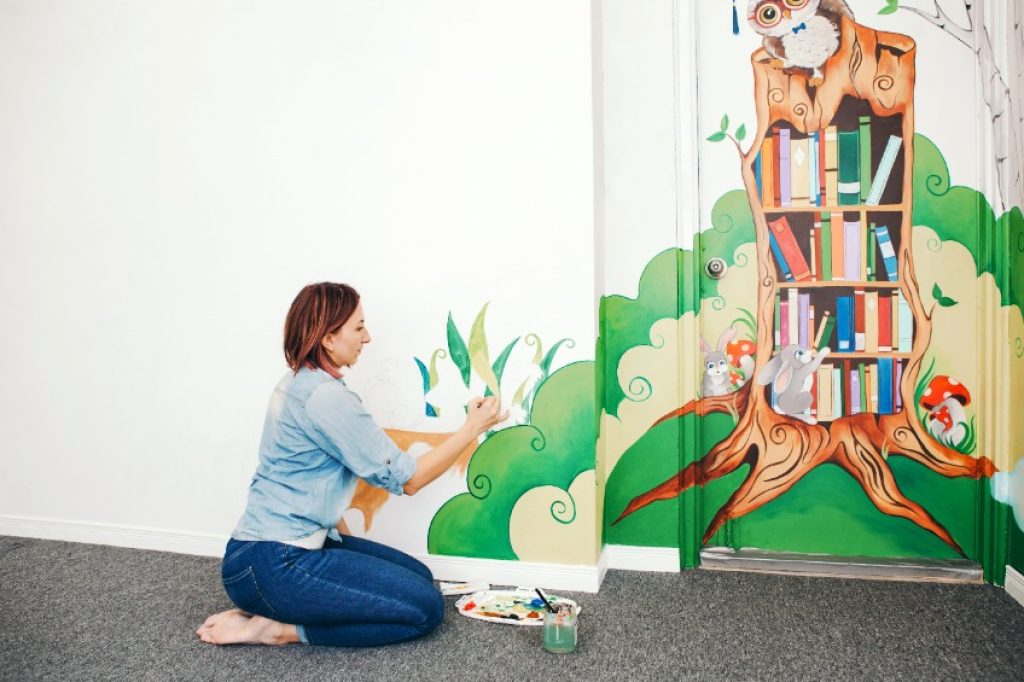Art Teachers Insurance
Art and creativity have forever been celebrated mediums of self-expression. While artists receive appreciation for their work, behind every skilled artist often lies the dedication of an art teacher. Art teaching businesses, however, like all professions, come with their unique set of challenges and risks. Hence, the importance of Art Teachers Insurance becomes paramount.
Need
Art Teachers Insurance ?
Get Your Free Quote

The Landscape of Art Teaching Businesses
Art teaching businesses encompass a wide spectrum. From private art tutors operating from home to large art schools offering myriad courses, the scale and approach can vary. Some art teachers might focus on traditional art forms, such as painting or sculpture, while others may choose to teach digital art, ceramics, or even performance arts.
The business can be standalone, a part of an art supply store, integrated within schools, or even operate as mobile units offering art workshops at various venues. The operations could also be seasonal, with art camps during summer or specialized masterclasses throughout the year.
Diversity in Art Teachers
The realm of art teaching is vast. To understand the different types of art teachers, consider:
| Type of Art Educator | Description |
|---|---|
| Traditional Art Teachers | Specialize in classic art forms, teaching in mediums like oil paints, watercolors, charcoal, etc., focusing on foundational elements. |
| Digital Art Teachers | Train students in software such as Adobe Illustrator, Photoshop, and tools for digital paintings, illustrations, 3D modeling. |
| Craft Teachers | Educate in handmade arts, including pottery, jewelry-making, beadwork, and paper crafting. |
| Performance Art Educators | Nurture talents in theater, dance, mime, emphasizing both technical and emotional depth. |
| Art History Teachers | Delve into art’s evolution, introducing students to eras, artists, cultural influences, and art movements. |
| Photography Teachers | Guide students in camera mechanics, lighting, composition, and the artistic elements of photography. |
| Textile and Fashion Art Teachers | Teach about patterns, fabrics, garment construction, history, and the future of fashion. |
| Ceramics Teachers | Focus on pottery techniques like coiling, pinching, slab work, with knowledge about glazing and firing. |
| Printmaking Teachers | Introduce techniques such as lithography, woodcut, etching, and screen printing to create artworks. |
| Music Art Educators | Offer training in the art of sound, from vocal training to mastery in musical instruments, shaping musicians. |
This table provides a clear and concise breakdown of the various types of art educators and their specialized fields of teaching.
Risks Associated with Art Teaching Businesses
Every profession comes with its own set of unique challenges and hazards, and art teaching is no exception. While nurturing creativity, art teachers often encounter situations that could potentially disrupt their teaching processes or even lead to financial or legal issues.
-
Physical Injuries
- Description: The art classroom or studio is a place filled with diverse tools and materials. From sharp implements to potentially hazardous chemicals, there are various materials that can cause harm.
- Examples:
- While sculpting, a student accidentally cuts their finger with a carving tool.
- A student gets a rash from using certain types of paints or solvents without proper protective wear.
- A student slips on spilled water or paint on the studio floor, resulting in a sprained ankle.
- During a pottery lesson, a student burns their hand on a hot kiln.
- While setting up an easel, it collapses causing minor injuries to a student nearby.
-
Damage to Artworks
- Description: Artworks are delicate creations. Whether it’s a painting drying on a rack, a sculpture on a pedestal, or digital art on a computer, various factors can cause damage.
- Examples:
- A sudden water leak in the studio ruins several canvas paintings.
- A student accidentally knocks over another student’s clay model, breaking it.
- A computer crash results in the loss of digital artworks by several students.
- A misbehaving child spills ink on a fellow student’s detailed sketch.
- A gust of wind from an open window blows away a delicate paper mâché creation.
-
Professional Mistakes
- Description: Sometimes, despite best intentions, the teaching methods or advice provided might not meet a student’s expectations or lead them astray.
- Examples:
- An art teacher gives advice on a technique that results in a student’s artwork being rejected from a prestigious art show.
- A teacher forgets to cover an important topic in the syllabus, causing students to be unprepared for an exam or competition.
- An instructor recommends a certain expensive art tool that ends up being unsuitable for the student’s needs.
- A teacher promises a certain level of proficiency after a course, but the student feels they haven’t achieved it.
- Digital art students find out their instructor hasn’t updated their syllabus, making them learn outdated software.
-
Property Damage
- Description: Art schools or private art studios house various valuable items, including art supplies, student projects, and more. These can be susceptible to various damages.
- Examples:
- A short circuit causes a fire in the studio, destroying art supplies.
- A thief breaks into an art classroom overnight, stealing computers and art tools.
- A heavy storm causes a tree to fall on the studio, resulting in extensive damage.
- A plumbing issue leads to flooding, ruining art materials stored in the basement.
- A power surge damages computers loaded with expensive digital art software.
-
Liability Claims
- Description: Art teachers or studios might face claims beyond just physical injuries or property damage. These can range from emotional distress claims to other personal injury allegations related to the classes.
- Examples:
- A student claims emotional distress after harsh critique from a teacher.
- A student or parent alleges that the environment of the art school caused undue stress or anxiety.
- Claims arise that an art teacher’s instructions or activities were unsafe or traumatizing.
- A student believes they were unfairly treated or discriminated against during lessons.
- Allegations of misconduct, either from fellow students or from instructors, lead to liability claims.
Understanding these risks is the first step towards taking measures to prevent them and ensuring that insurance is in place to provide a safety net should they occur.
Small Business General Liability Protection:
Get Your Free Quote
Types of Business Insurance for Art Teachers
Given these risks, art teachers need to equip themselves with insurance to ensure the smooth operation of their business. Let’s dive into the types of business insurance relevant to Art Teachers Insurance:
| Type of Insurance | Description | Relevance to Art Teachers (Examples) |
|---|---|---|
General Liability |
Protects against claims of bodily injuries or property damage incurred by third parties due to your business operations. | A student accidentally trips over art supplies left on the floor, injuring themselves. General liability would cover medical costs. |
E&O (Professional Liability Insurance) |
Protects against claims of negligence or failure to provide services as promised, resulting in financial harm to a client. | A student claims the art course didn’t equip them for a professional art career as promised. E&O covers legal fees and settlements. |
Commercial Auto |
Covers damages to a business vehicle or liabilities arising out of a work-related accident. | An art teacher’s vehicle, used to transport art supplies for a workshop, gets into an accident. Commercial auto covers repair costs. |
Workers’ Compensation |
Mandatory in most states for businesses with employees. Covers medical costs and wage replacement if an employee is injured on the job. | An assistant in an art school cuts their hand while preparing clay models. Workers’ compensation would cover their medical bills. |
Tools and Equipment |
Covers repair or replacement costs if business tools or equipment get damaged, stolen, or face other perils. | Expensive art equipment, like a digital drawing tablet or kiln, gets damaged due to a power surge. This insurance helps in replacements. |
This table provides a comprehensive overview of various insurance types, detailing their general purpose and how they specifically relate to scenarios art teachers might face.
Conclusion
The world of art is vast, and the educators who navigate students through this journey are invaluable. But with the beauty of art comes the risks associated with teaching it. Art Teachers Insurance ensures that these educators can focus on their passion without the constant worry of potential risks. Investing in comprehensive insurance not only safeguards the financial health of the business but also ensures peace of mind. Whether you’re an independent art tutor or run a large art school, being insured is not just a safety net; it’s a mark of professionalism.
FAQ for Art Teachers Insurance
What type of insurance do artists need?
Artists, similar to other professionals, require various types of insurance based on their specific needs. At a basic level, they might consider General Liability Insurance to protect against claims of bodily injuries or property damage. Tools and Equipment Insurance is vital if they have expensive equipment or tools of trade. For those offering advice or classes, E&O (Professional Liability Insurance) can protect against claims of negligence. Additionally, artists who sell their work or have studios open to the public may also consider Property Insurance to cover potential damages to their artworks or studio.
What insurance do I need to run a workshop?
Running a workshop exposes you to a variety of risks. General Liability Insurance is essential as it can cover injuries or damages that might occur during the workshop. If you’re using a vehicle for your workshop needs, Commercial Auto Insurance is advisable. Workers’ Compensation might be required if you have employees assisting you. And if you’re providing specific expertise or advice, E&O (Professional Liability Insurance) can help protect against claims related to the quality of your instruction.
What is an art teacher?
An arts teacher is an educator specializing in teaching various forms of art. This can range from traditional art forms like painting, drawing, and sculpture to modern forms like digital art, photography, and performance art. Art teachers play a crucial role in nurturing creativity, teaching techniques, introducing students to art history, and helping them refine their artistic skills.
Get Your Business Insurance:
Get Your Free Quote
What is art therapy insurance?
Art therapy insurance is specialized coverage designed for art therapists. Art therapy is a therapeutic approach that uses art-making to address psychological and emotional needs. The insurance protects therapists against potential claims that might arise during their practice, such as claims of negligence, malpractice, or even general liability claims like physical injuries. It ensures that therapists can offer their services without being overly burdened by potential legal and financial risks.
What is art installation insurance?
Art installation insurance specifically covers artworks that are displayed in public or private spaces, either temporarily or permanently. This type of insurance is essential for artists, galleries, or organizers setting up installations, as it protects against potential damages, theft, vandalism, or other risks that the artwork might be exposed to while on display. It ensures that the financial value of the art is protected, and any potential repair or replacement costs are covered.

